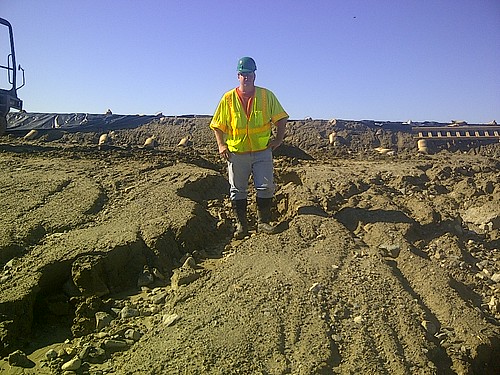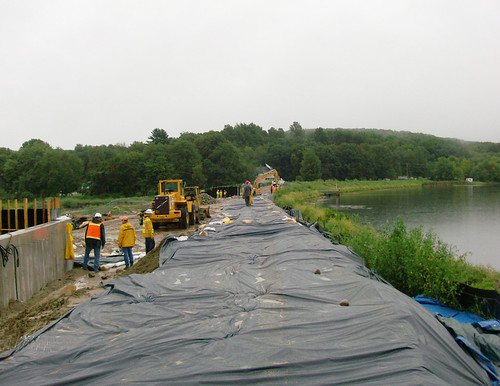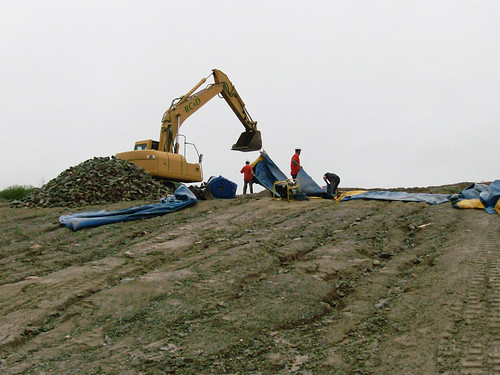
Just before Tropical Storm Irene hit Massachusetts, employees of USDA’s Natural Resources Conservation Service (NRCS), including me, were informed of the storm’s potential impact on a dam rehabilitation project that was underway in Westborough, Mass., a suburban community west of Boston.
At the time, NRCS was working to widen the auxiliary spillway at the George H. Nichols Dam, a flood retention structure owned by the Massachusetts Department of Conservation and Recreation (DCR). This project was made possible with nearly $2 million in American Recovery and Reinvestment Act of 2009 (the Recovery Act) funds. The Recovery Act was created by the Obama Administration to boost the nation’s economy, in part by developing and improving infrastructure like dams.
A spillway acts like a safety valve to prevent water from flowing over the top of the dam in a storm, which can damage the dam and compromise its structural integrity. With the new spillway excavated, the dam was in danger of breaching if the eight inches of rain that were forecast for the following 12 hours actually occurred. The potential for major flooding and property damage was significant.
I immediately contacted the contractor and asked that they begin preparations for the storm, including the construction of an earthen berm in the new auxiliary spillway to protect the dam from breaching. I also called the city’s Conservation Commission for permission to lower the water level in the reservoir to increase its capacity.
On Saturday, the day of the storm, my work began at 4 a.m. I coordinated with local emergency management officials and state dam safety personnel, and ensured that the contractor completed the work.

The rain started at 1 p.m.; construction continued until 9 p.m. I went home at 11 that night. By 3 a.m. I was back on site to monitor precipitation and the impoundment level. I left to get some sleep but was back again by 6 a.m.
By this time, the rain and wind intensity had increased. Throughout the morning, I measured precipitation and reservoir levels and forwarded the data to engineering consultants who were revising various mathematical models of potential flood impact based on the forecasted rainfall. Ultimately, the reservoir crested at 2 inches below the existing auxiliary spillway.
By the time Irene was done with us, many trees were down and most of the area was without power, including the construction trailer. The weekend was certainly long and exhausting, but it was rewarding, too: the dam weathered the storm with only minor damage.
Learn more about NRCS Recovery Act Programs.
Check out more conservation stories on the USDA blog.
Follow NRCS on Twitter.

